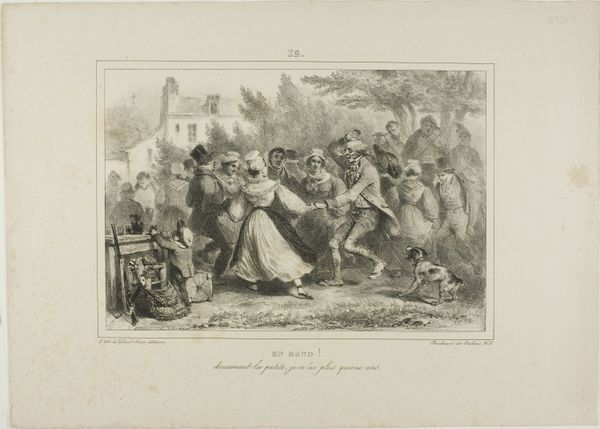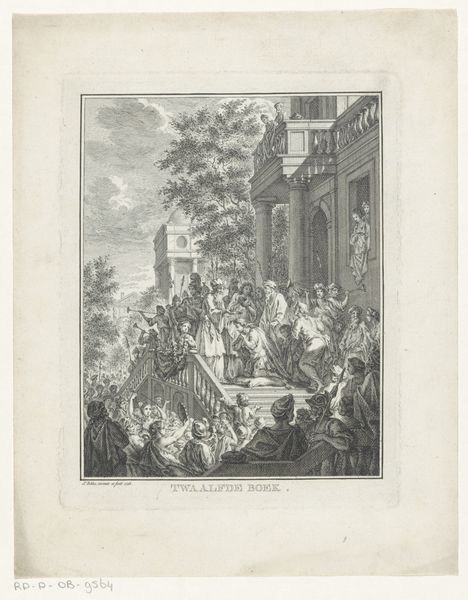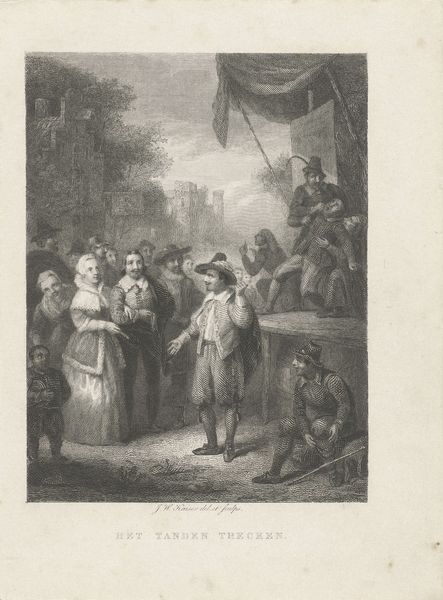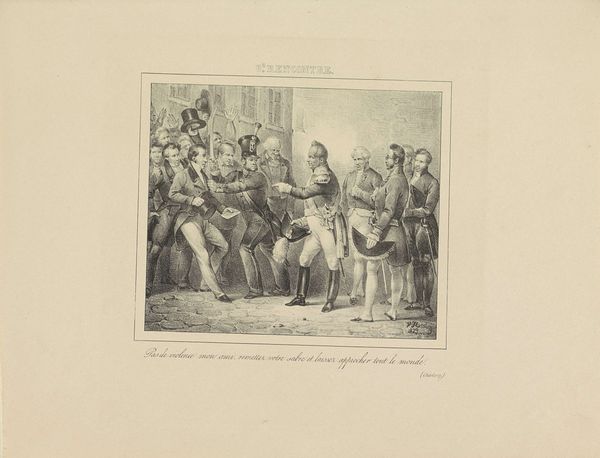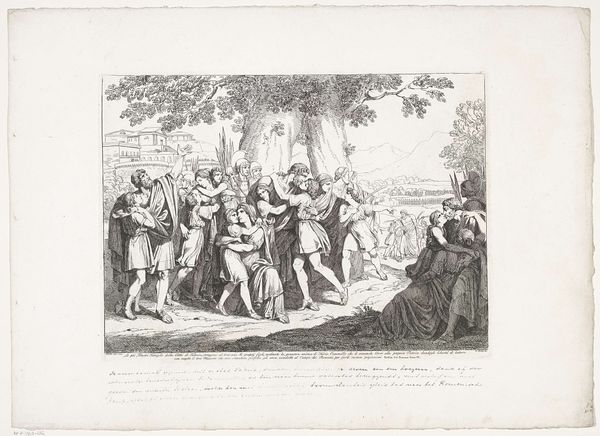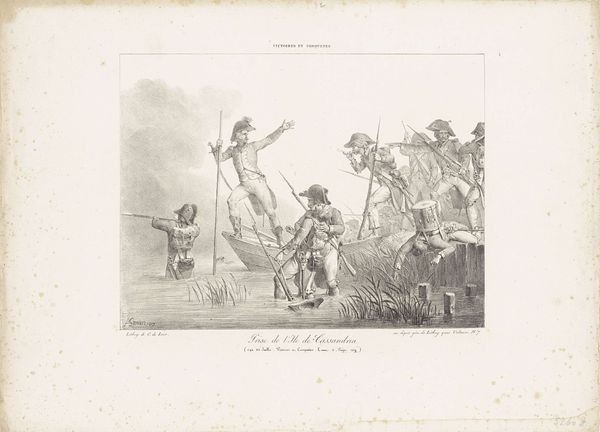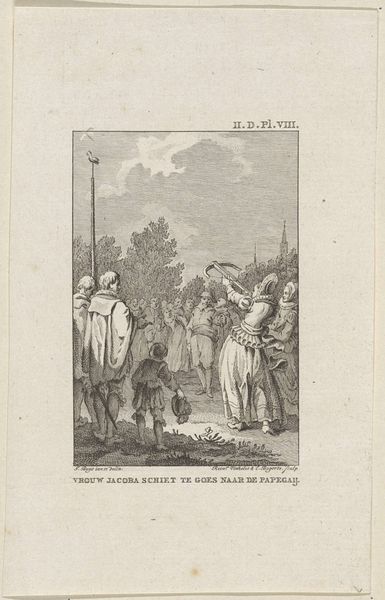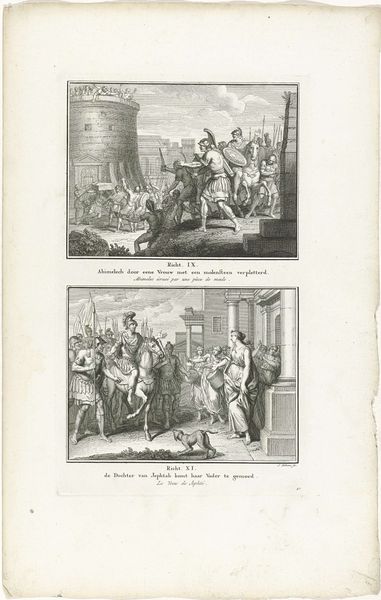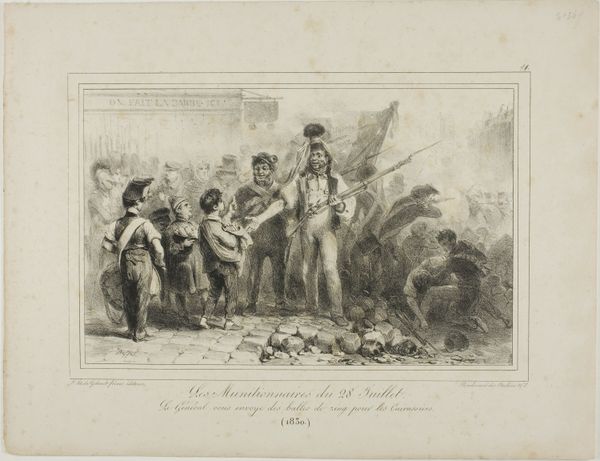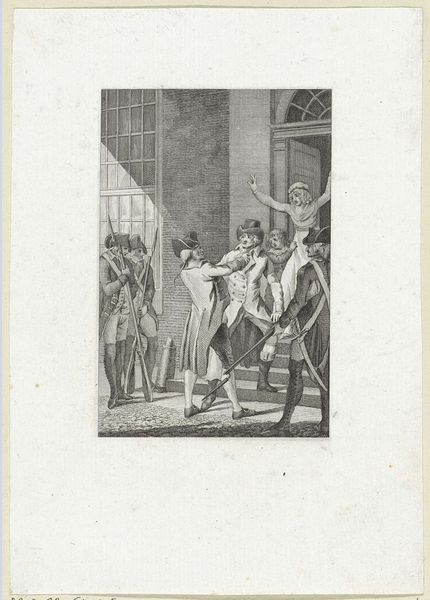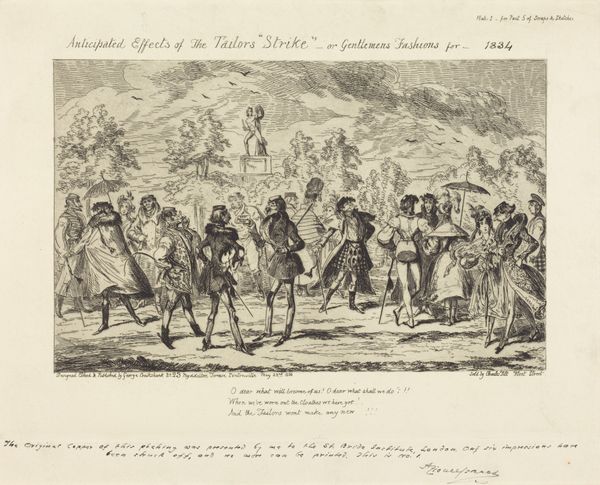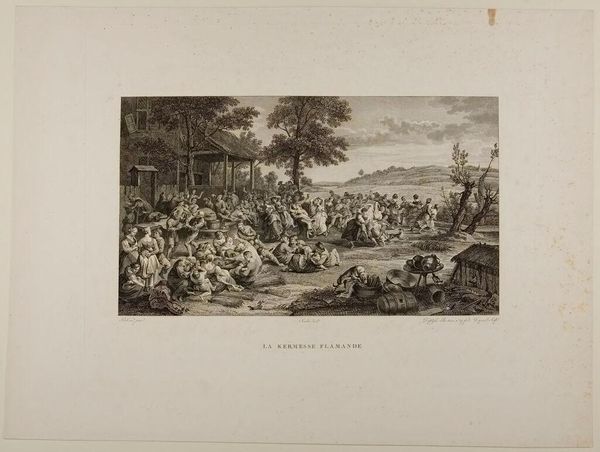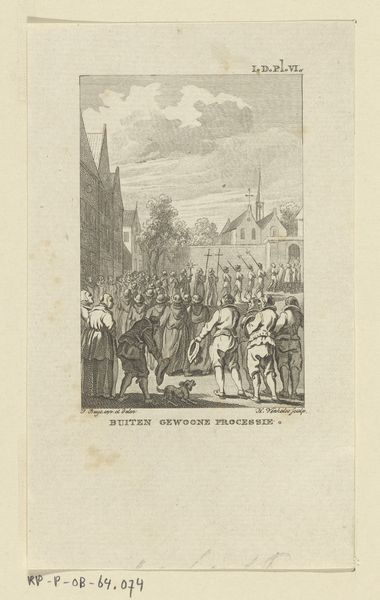
drawing, lithograph, print, paper, engraving
#
drawing
#
narrative-art
#
baroque
#
lithograph
# print
#
paper
#
france
#
genre-painting
#
history-painting
#
engraving
Dimensions: 182 × 139 mm (image); 245 × 183 mm (sheet)
Copyright: Public Domain
Editor: This print, entitled "Public Rejoicing", is a lithograph made by Charles Motte. There's a definite sense of chaotic energy to it. How do you interpret this work, looking at the composition and style? Curator: The energy you mention derives primarily from the dense concentration of figures within a shallow pictorial space. The composition employs a classical Baroque diagonal, ascending from left to right. Observe how this directs the eye upwards. The artist's meticulous mark-making defines individual forms, yet the overall effect remains dynamic rather than static. What strikes you about the artist's use of line? Editor: It’s interesting how much detail he gets with what looks like simple lines! The figures aren’t colored, so all the information has to be within the cross-hatching and etching. I guess it's pretty impressive, but does that make it ‘good’? Curator: Indeed. Line becomes the primary means of delineating form and conveying light and shadow. Notice the varying density of the lines, how they coalesce to create darker values and a sense of depth, however limited. We may consider line not merely as descriptive but expressive, charged with a nervous energy appropriate to the depicted scene. Ultimately, in this evaluation, “good” becomes a function of technical mastery and expressive power within the chosen medium, doesn’t it? Editor: I see what you mean! I had just been viewing this in a pretty basic way, focusing on the subject; looking at just the lines definitely added new information. Thanks for helping me understand a different way to evaluate the image! Curator: Precisely, it is the synthesis of subject matter and formal execution that allows for a deeper appreciation of artistic intent and effect. It has been enlightening to engage in this analysis.
Comments
No comments
Be the first to comment and join the conversation on the ultimate creative platform.
